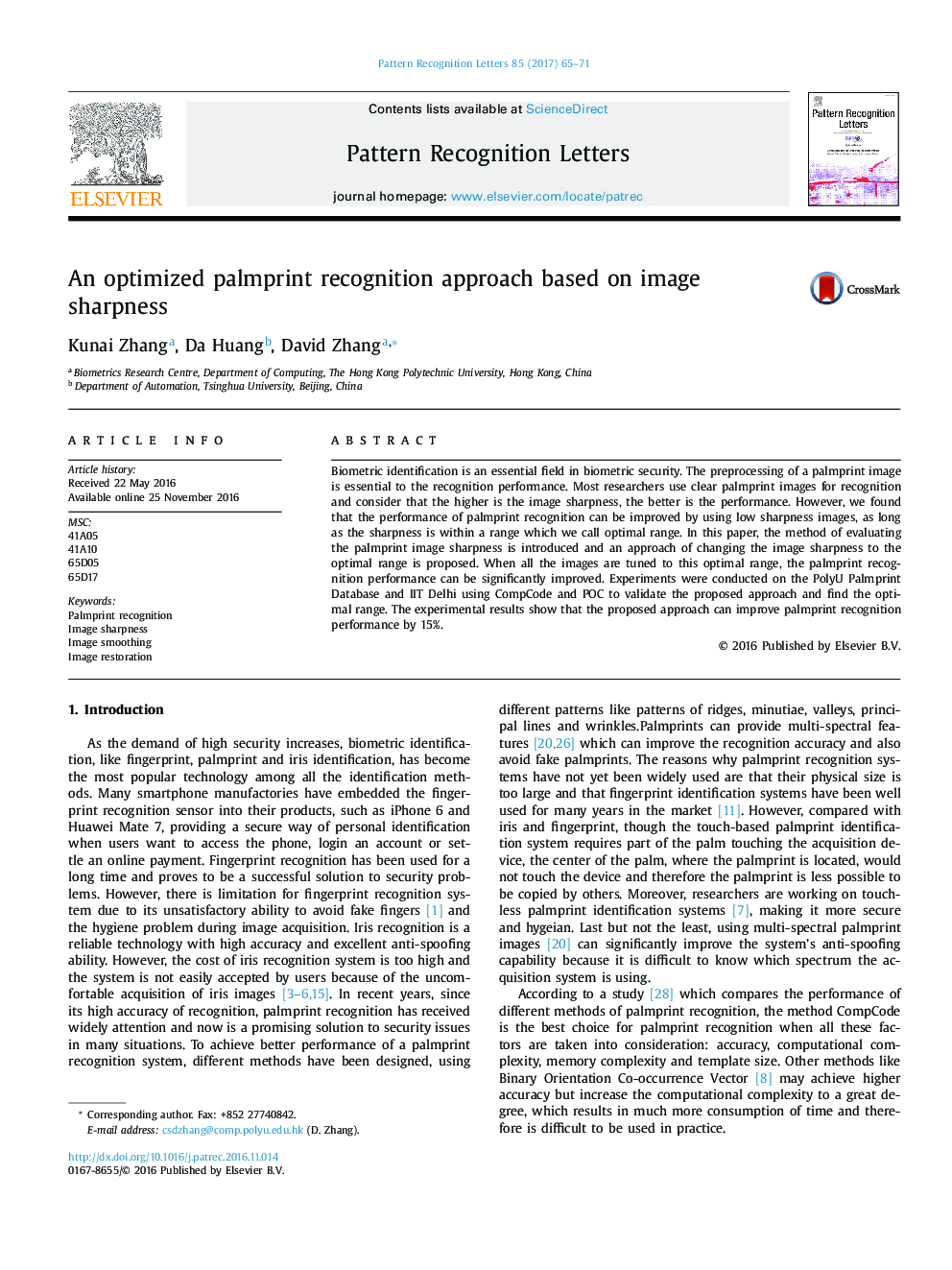| Article ID | Journal | Published Year | Pages | File Type |
|---|---|---|---|---|
| 4970337 | Pattern Recognition Letters | 2017 | 7 Pages |
â¢We found changing image sharpness can improve palmprint recognition performance.â¢Introduce EAV to assess palmprint image sharpness.â¢We've found the optimal sharpness range [E1, E2] that can optimize the performance.â¢Using image smoothing and restoration can tune the images to [E1, E2].â¢Our approach can reduce the EER of palmprint recognition by 15%.
Biometric identification is an essential field in biometric security. The preprocessing of a palmprint image is essential to the recognition performance. Most researchers use clear palmprint images for recognition and consider that the higher is the image sharpness, the better is the performance. However, we found that the performance of palmprint recognition can be improved by using low sharpness images, as long as the sharpness is within a range which we call optimal range. In this paper, the method of evaluating the palmprint image sharpness is introduced and an approach of changing the image sharpness to the optimal range is proposed. When all the images are tuned to this optimal range, the palmprint recognition performance can be significantly improved. Experiments were conducted on the PolyU Palmprint Database and IIT Delhi using CompCode and POC to validate the proposed approach and find the optimal range. The experimental results show that the proposed approach can improve palmprint recognition performance by 15%.
